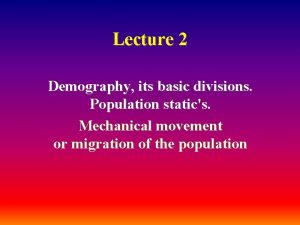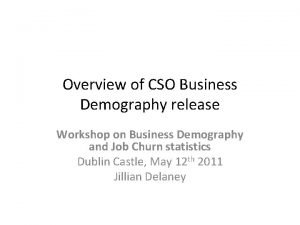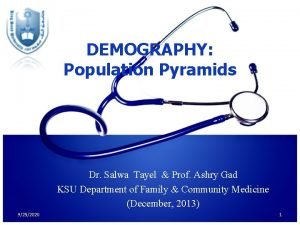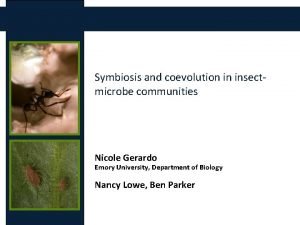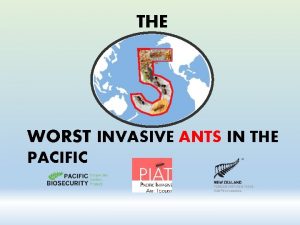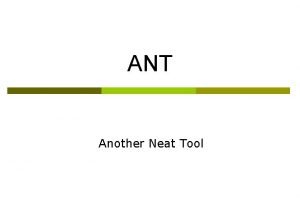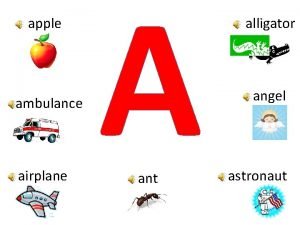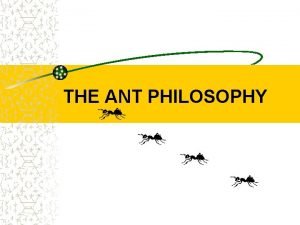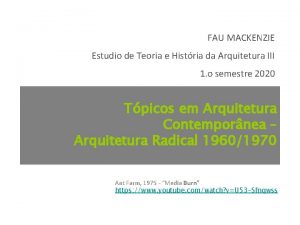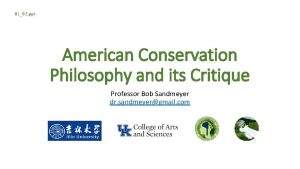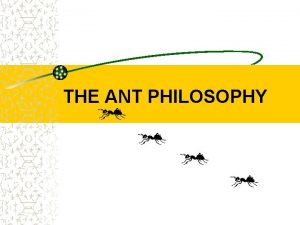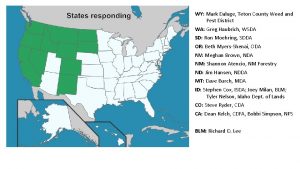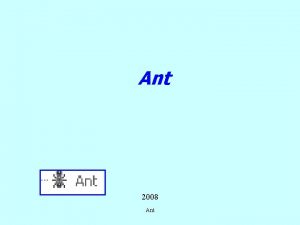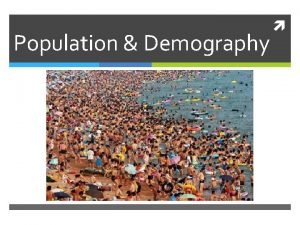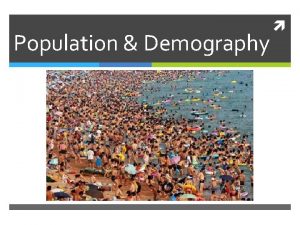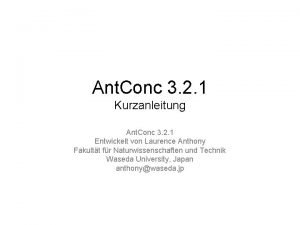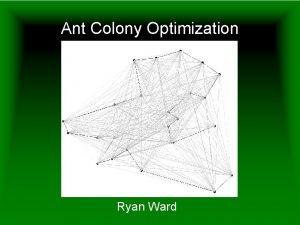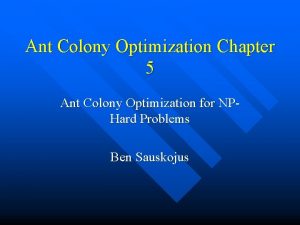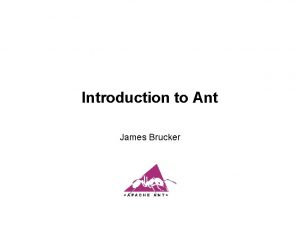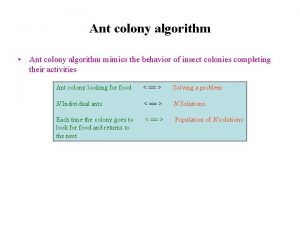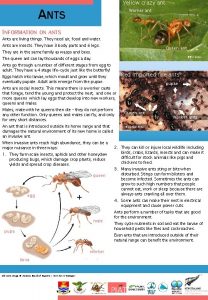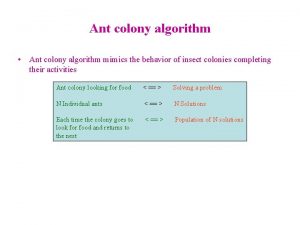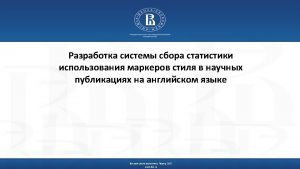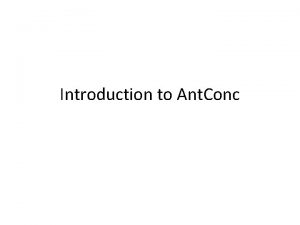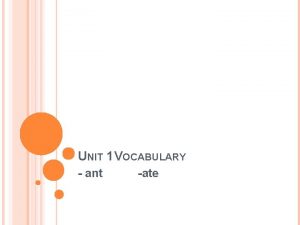Topic Pl ANT DEMOGRAPHY What is demography Demography






















- Slides: 22


Topic: Pl. ANT DEMOGRAPHY

What is demography? • Demography (from prefix demo- from Ancient Greek δῆμος dēmos meaning "the people", and graphy from γράφω graphō, implies "writing, description or measurement") is the statistical study of populations, especially human beings. . Demographics are quantifiable characteristics of a given population.

Continue. . • The study of species populations including their size, growth, density, distribution, statistics regarding birth, disease and death and change of population size over time

Continue. . • Father of demography: John Graunt, 1620 -1674, is known as the father of demography. • Big three of demography: a) Birth b) Death c) Migration

What is plant demography? • The study of species populations including their size, growth, density, distribution, statistics regarding birth, disease and death and change of population size over time. What is plant demography? Change in population's size over time.

Continue. . . • Demography is the branch of ecology that studies the growth and regulation of animal and plant populations, resulting from the individual processes of birth, death, immigration and emigration in natural, managed or artificial environments.

Importance of demography • Ecological demographic principles are building blocks in most ecological theory and application. If scientific ecology needs a coherent set of demographic principles to refer to, applied science also calls for them:

Continue. . . • a solid demographic theory is necessary: a. to support the conservation of biotic diversity, b. to develop sound pest control strategies, c. to understand disease spread, d. and to decide optimum harvesting levels of economically important populations.

Continue. . . • The basic object of study in ecological demography (ED) is the life cycleof the individual organism – i. e. , the species-specific set of laws that determine the characteristics and timing of birth and death. The life cycle is the prime determinant of the demographic characteristics of a population.

Plant demography includes counting: • 1. Number of genetically distinct individuals • 2. Number of vegitatively reproduced individuals • 3. Number of leaves, branches, tillers, stems, flowers. etc • 4. Movement of seeds into and out of the

How can we predict population change over time? • By determining birth and death rates of an individual, age, and when it reproduces • Mathematical equation for change of a population over time(d. N/dt) = (r) * N (net increase) = r = (births - deaths)N = number of

Population growth models • There are two population growth models; 1. Discrete breeding 2. Continuous breeding

Discrete breeding • Populations reproduce once in their lifetime (big-bang reproduction) ▪ Example: I. Annual plants. II)Insects they allocate most of their energy to reproduction and they die after reproduction

Continuous breeding • Reproduce more than once in their lifetime (Repeated reproduction) ▪ Example: I. Perennial plants. II. Mammals They allocate energy to growth and establishing themselves first and delay reproduction for later.

Mathematical models Two mathematical models are used to predict population growth for both of the breeding models. 1. Exponential growth model 2. Logistic growth model

Exponential growth model

Logistic growth model

Factors that affect population size • Following are the important factors that affect population size; 1. Immigration 2. Birth Rate 3. Emigration 4. Mortality

Plant Demography and Ecological Theory • The meanings of 'theory' in ecology are examined and illustrated with six examples from plant ecology. The application of demographic theory to plants (and other modular organisms) depends on recognition of two levels of populational organisation - the genet (N) and the modular unit of structure (η)

Continue. . . • Examples are given to illustrate theory that a plant is a population of parts that are born and die and the ways in which such theory can be applied to field studies.

 Components of demography
Components of demography Rimland theroy
Rimland theroy Deforestation antonym
Deforestation antonym Static demography
Static demography Population demography definition
Population demography definition Cso business demography
Cso business demography Sources of demography ppt
Sources of demography ppt Elements of demography
Elements of demography Pee writing strategy
Pee writing strategy Narrow
Narrow 3 little figs
3 little figs Nicole gerardo
Nicole gerardo Life cycle of ant
Life cycle of ant Ant another neat tool
Ant another neat tool Media ant
Media ant Small pictures of apple ,ant ,aeroplane,ambulance,axe
Small pictures of apple ,ant ,aeroplane,ambulance,axe Ants philosophy
Ants philosophy žalias jautelis ant žalio stalo žalius pietus valgo
žalias jautelis ant žalio stalo žalius pietus valgo Ant farm
Ant farm The gift of the magi literary devices
The gift of the magi literary devices John locke philosophy of education ppt
John locke philosophy of education ppt Ant philosophy
Ant philosophy Spider control teton county
Spider control teton county



